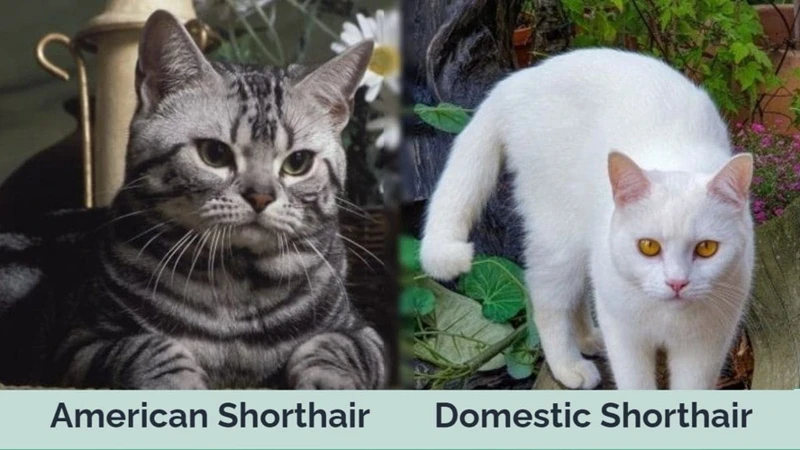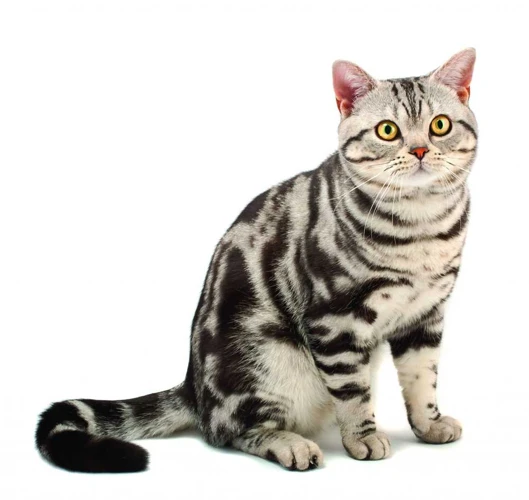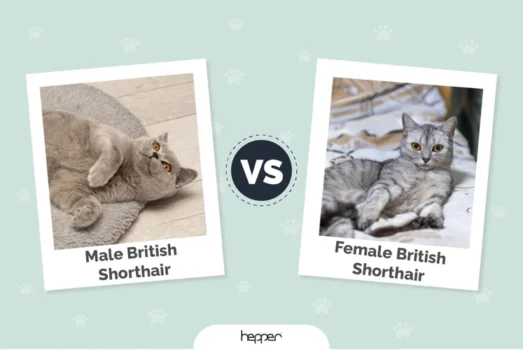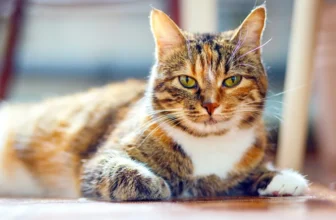When it comes to determining the behavior of American Shorthair cats, gender plays a significant role. It’s no secret that male and female cats can display distinct personalities and temperaments, but what exactly are the differences between the two when it comes to American Shorthairs? As a pet owner or prospective adopter, understanding these gender-based nuances can help you provide the best possible care for your beloved feline friend. Let’s explore the impact of gender on the behavior of American Shorthairs – from physical differences to behavioral issues and health considerations.
Physical Differences

When it comes to American Shorthairs, physical differences play a significant role in their behavior. From size and weight to facial features and coat, these feline companions have distinguishing characteristics that can impact their temperament. Understanding these physical differences is key to providing your American Shorthair with the best possible care, as well as ensuring their safety and comfort in various situations. Whether you’re concerned about climbing safety, general stress management, or introducing your cat to new pets, familiarizing yourself with your American Shorthair’s physical differences is essential.
Size and Weight
When it comes to size and weight, there are significant differences between male and female American Shorthairs. Males are typically larger and heavier than females. According to the breed standard of The International Cat Association, male American Shorthairs should weigh between 11 to 15 pounds while females should weigh 8 to 12 pounds. However, some male American Shorthairs can weigh up to 20 pounds, while some females can weigh as little as 6 pounds.
It is essential to note that the size and weight of American Shorthairs can also be influenced by various factors such as genetics, diet, and exercise. Nonetheless, on average, male American Shorthairs tend to be more muscular and have a bulkier build than females. This difference is especially noticeable in the head, neck, and shoulder areas. Males tend to have a more prominent and muscular neck, as well as a broader head and shoulders.
Table: Average Weight and Size of Male and Female American Shorthairs
| Attribute | Male American Shorthairs | Female American Shorthairs |
|---|---|---|
| Weight | 11 to 15 pounds (on average) | 8 to 12 pounds (on average) |
| Size | Larger and heavier build, more muscular | Smaller and lighter build, less muscular |
| Head and Neck | Prominent and muscular neck, broader head and shoulders | Less prominent and muscular neck, narrower head and shoulders |
Understanding the size and weight differences between male and female American Shorthairs can be helpful in many ways. For instance, it can help you choose the appropriate toys, climbing posts, and litter boxes for your cat. It can also help you identify potential health issues, such as obesity, which is more common in male American Shorthairs.
It’s important to keep your American Shorthair at a healthy weight to avoid several health problems that can arise from being overweight. One way to help your cat maintain a healthy weight is to provide them with plenty of opportunities for exercise, such as playing with toys or using climbing posts. Additionally, you can help your American Shorthair live a healthy and happy life by regularly scheduling veterinary checkups and ensuring they have a healthy diet.
If you are interested in learning more about how to keep your American Shorthair safe, healthy, and happy, then follow the internal link to our article on American Shorthairs Climbing Safety.
Coat
American Shorthair cats are known for their beautiful coats, which come in a variety of colors and patterns. The coat of an American Shorthair is thick and plush, and requires minimal grooming due to its short length. However, there are some differences between the coats of male and female American Shorthairs.
Male American Shorthair Coat: Male American Shorthairs tend to have a thicker and fuller coat than females. This is due to their larger size and more muscular build, which allows them to have a more dense coat. The fur on their chest and belly is more pronounced and thicker, while the fur on their backs is shorter and less dense. Male American Shorthairs also tend to have a more pronounced ruff around their necks.
Female American Shorthair Coat: Female American Shorthairs have a slightly thinner coat compared to their male counterparts. Their fur is not as dense, and their ruff is less pronounced. The fur on their chest and belly is also less thick compared to males.
It’s important to note that coat thickness and texture can vary among individual American Shorthairs regardless of their gender. Factors such as genetics and health can also play a role in determining the quality of a cat’s coat.
To keep an American Shorthair’s coat healthy and shiny, regular grooming is recommended. This includes brushing their fur to remove loose hairs and prevent matting, as well as occasional bathing with a mild shampoo. Keeping their coat healthy can also help to minimize shedding and reduce the risk of hairballs.
Internal link: If you’re interested in learning more about American Shorthair body language, click here to read our article.
Facial Features
The facial features of American shorthairs can also differ between males and females. Males tend to have a more prominent and angular face with a broader muzzle and prominent cheeks. Females, on the other hand, usually have a more delicate and round-shaped face with a smaller muzzle and less prominent cheeks. Additionally, male American shorthairs often possess a wider and more muscular neck, which gives them a more robust appearance.
These physical differences in facial features can also reflect on their personality and behavior. Studies have found that male cats with wider faces tend to exhibit more aggressive tendencies and are more territorial. On the other hand, female cats with rounder faces are usually more affectionate and outgoing.
It’s essential to understand your cat’s facial features and how they influence their behavior. For example, if you have a male American shorthair with a broader face, you may want to pay extra attention to signs of aggression or territorial behavior. Conversely, if you have a female shorthair with a delicate face, you can expect your cat to be affectionate and social.
Understanding the different facial features of American shorthairs can help you identify their personalities and potential behavioral issues. By paying attention to your cat’s facial expressions and body language (insert internal html link to /american-shorthair-body-language/), you can learn more about their needs and preferences. This knowledge can help you manage your cat’s stress levels (insert internal html link to /cat-stress-management-tips/) and ensure their comfort and safety.
Facial features are just one of the many physical and behavioral differences between male and female American Shorthairs. However, paying attention to these differences can help you provide adequate care, training (insert internal html link to /positive-reinforcement-american-shorthairs/), and socialization.
Temperament

One of the most fascinating aspects of owning an American Shorthair is observing their unique temperament. These beloved feline companions have distinct personalities that vary from one gender to the other. Understanding the behavioral differences is crucial to providing proper care and training to your furry friend. Let’s delve into the temperament of American Shorthairs and learn how it can affect their behavior. We will discuss the traits of male and female American Shorthairs, their individual personalities, and how their gender impacts their socialization. Additionally, we will explore common behavioral issues in both male and female American Shorthairs, and share helpful tips on how to address them. So let’s dive in and learn more. If you want to learn more about aggressive or territorial behavior in American Shorthairs, please follow the link.
Male American Shorthair Behavior
Male American Shorthairs are known for their distinct behavior. They are energetic, playful, and love to cuddle with their owners. However, there are some things that potential owners should be aware of before bringing a male American Shorthair home.
One of the notable differences in behavior between male and female American Shorthairs is territorial behavior. Males are more territorial and tend to mark their territory more often. They will use scent glands in their paws to mark furniture, walls, and even their owners. It’s important to invest in a scratching post and provide plenty of toys to avoid destructive behavior. The territorial behavior in American Shorthairs can be minimized through proper training and socialization.
Male American Shorthairs can also exhibit aggressive behavior. They may become aggressive towards other male cats in the household and sometimes towards their owners. This behavior can be reduced by having them neutered. Neutering not only helps reduce aggression but also helps prevent prostate problems and unwanted litters. Early neutering is ideal as it can help limit aggressive tendencies.
When it comes to personality, male American Shorthairs tend to be more active and curious compared to females. They love to explore their surroundings and play with their toys. This behavior makes them entertaining companions, but they require ample exercise and attention. If they lack exercise or attention, they may develop behavioral issues such as excessive meowing, knocking over household items, or even aggression towards their owners.
In terms of health and lifestyle considerations, male American Shorthairs may be prone to obesity. It’s essential to monitor their diet and provide them with regular exercise to keep them healthy. Additionally, they are known to enjoy climbing and need to have a high perch in their living space. This will satisfy their natural curiosity and territorial behaviors while also providing a safe space.
Male American Shorthairs have unique personalities and behaviors that require proper training and socialization. Their love for playtime and cuddles make them great family pets, but potential owners need to understand and be prepared for their territorial and aggressive tendencies.
Female American Shorthair Behavior
Female American Shorthairs have a reputation for being more reserved and independent compared to males. They tend to be more cautious and sensitive, taking their time to warm up to new people and situations. Female American Shorthairs are known to be more vocal than males, particularly when they are in heat. They will communicate with their owners through meows and body language, showing their affection and needs. These cats can develop strong bonds with their owners and will often want to be close to them when they feel threatened.
Here are some common behavior traits of female American Shorthairs:
- They are often shy and reserved around strangers and new pets.
- They are good at hiding, and will do so when they feel threatened or overwhelmed.
- They can become territorial and protective over their litter boxes and food bowls.
- They have a tendency to be more fastidious with grooming themselves than males.
- They can experience mood swings and may become more irritable during their heat cycles.
While females may be more reserved and independent, they are as affectionate and loving as males. They want to be recognized for their unique personalities and traits. It is important for owners to respect a female American Shorthair’s boundaries and provide them with a safe and comforting environment.
If you are interested in learning more about training and socializing American Shorthairs, consider checking out our article on American Shorthair Kitten Development and Behavioral Care. Additionally, introducing a new pet into your household can be a daunting task – for some helpful tips, check out our article on Introducing an American Shorthair to New Pets.
Personality Differences
Male and female American shorthairs exhibit different personality traits that may be influenced by both genetic and environmental factors. Understanding these differences can help pet owners know what to expect from their furry friends. Here is a breakdown of some of the notable personality differences between male and female American shorthairs:
| Male American shorthairs | Female American shorthairs | |
|---|---|---|
| Independence | Male American shorthairs tend to be more independent and enjoy spending time alone. | Female American shorthairs often crave attention from their owners and may follow them around the house. |
| Activity level | Male American shorthairs are typically more active and playful, enjoying games like fetch and toy mice. | Female American shorthairs tend to be more laid back and may prefer activities like napping and sunbathing. |
| Affection | Male American shorthairs are generally more affectionate and love to cuddle up with their owners. | Female American shorthairs may be affectionate but on their own terms and may not seek out cuddles as much. |
| Aggressiveness | Male American shorthairs may exhibit more aggressive behavior, especially towards other cats. | Female American shorthairs are typically less aggressive than males but may still exhibit territorial behavior towards other pets. |
| Litter preferences | Male American shorthairs may be more prone to spraying or marking their territory, especially if they are not neutered. | Female American shorthairs are typically easier to litter train and may be less likely to exhibit inappropriate elimination behavior. |
It is important to note that these personality differences are not absolute, and individual cats may exhibit a range of behaviors. However, recognizing general tendencies can help pet owners better understand and care for their American shorthair cats. Additionally, training and socialization can play a significant role in shaping a cat’s personality and reducing any negative behaviors such as aggressive behavior or inappropriate elimination.
Impact on Socialization
Socialization plays a crucial role in the upbringing of a cat and can have a profound impact on their behavior. American Shorthairs, whether male or female, require ample socialization from a young age. Failure to provide opportunities for socialization can result in behavioral problems later in life.
Early Socialization: Kittens should be exposed to a variety of experiences and stimuli including people, other animals, and various sights and sounds. This helps them adapt to new situations and reduces the likelihood of them becoming fearful or aggressive later in life.
Differences between Male and Female Socialization: In general, male American Shorthairs tend to be more independent and self-sufficient than females. This means they may require less social interaction with humans and other animals. However, it is still important to provide them with ample opportunities for socialization in their early years. On the other hand, female American Shorthairs tend to be more social and affectionate, and may require more frequent social interaction with humans.
Training and Socialization: To ensure that your American Shorthair is well socialized, it is important to start training and socialization early. This can include introducing them to other pets, providing ample playtime, and allowing them to explore their environment. Proper socialization can help reduce the likelihood of behavioral problems like aggression, anxiety, or depression.
Resources: If you’re struggling with socializing your American Shorthair, consider consulting with a veterinarian or animal behaviorist. They can provide you with additional resources and advice on socializing your cat. Additionally, you can find helpful resources online like the American Shorthair Litter Preferences article, which provides information on how to keep your cat happy and healthy.
Behavioral Issues
One of the most challenging aspects of owning an American Shorthair, regardless of gender, is addressing and preventing behavioral issues. From aggression to litter box preferences, these problems can not only be frustrating for owners but also, if left unresolved, affect the health and well-being of the animal. In this section, we’ll explore some of the behavioral issues commonly experienced by American Shorthairs, as well as provide tips for prevention and treatment. Stay tuned to learn about the gender-specific behavioral problems that male and female American Shorthairs may experience and how to resolve them effectively. To learn more about American Shorthairs’ litter preferences, check out our article on how to choose the right litter for your cat.
Male Behavioral Issues
Studies have shown that male American Shorthairs have certain behavioral issues that are not commonly observed in their female counterparts. Here are some of the behavioral issues that male American Shorthairs might exhibit:
- Aggression: Male American Shorthairs are known to exhibit more aggressive behavior than females. This could manifest in various forms such as territorial aggression, fear aggression, or even aggression towards their owners.
- Marking: Male American Shorthairs have a tendency to mark their territory by spraying urine on walls, furniture, or other objects. This behavior is more common in unneutered males, and neutering can significantly reduce this behavior.
- Roaming: Male American Shorthairs tend to roam more than females, especially if they are unneutered. This could result in them getting into fights with other cats, getting lost, or even getting hit by a car.
- Mating Behavior: Unneutered male American Shorthairs have a strong mating drive and might exhibit behavior such as yowling, pacing, or attempting to escape to find a mate.
It’s important to note that not all male American Shorthairs will exhibit these behaviors, and proper training and socialization can go a long way in preventing or reducing these behavioral issues. It’s also worth mentioning that neutering can have a positive impact on male American Shorthair behavior, reducing their desire to roam, mark territory, and exhibit mating behavior.
Female Behavioral Issues
When it comes to American Shorthair cats, female cats may exhibit certain behavioral issues that differ from their male counterparts. Some of these behavioral issues include:
- Aggression: Female American Shorthairs may display aggression towards other cats or even humans. This aggression may be situational, such as when they are protecting their territory or feeling threatened by a perceived enemy.
- Urinating Outside the Litter Box: Some female American Shorthairs may start urinating outside their litter box. This behavior may be due to a medical issue or a response to stress or anxiety. It is important to rule out any underlying medical problems and address any possible environmental factors that may be contributing to the behavior.
- Biting: Females may be more prone to biting than males, especially if they feel their space or territory is being invaded. This behavior may also be seen in female cats experiencing pain or discomfort.
- Excessive Grooming: Some female American Shorthairs may engage in excessive grooming, to the point where they may start losing fur. This behavior may be attributed to stress, anxiety, or even a compulsive disorder.
- Anxiety: Female American Shorthairs may be prone to anxiety, which can manifest in various ways such as hiding, aggression, or excessive grooming. This anxiety may be triggered by changes in their environment, such as moving to a new home, or changes in household dynamics, such as new pets or family members.
It is important to note that these behaviors are not unique to female American Shorthairs and may be exhibited by males as well. However, understanding the potential behavioral issues that females may experience can help cat owners provide appropriate care and training to prevent or address any unwanted behaviors.
Health and Lifestyle Considerations
Maintaining the health and lifestyle of your American Shorthair is important, regardless of gender. Male and female American Shorthairs have different lifestyles and health needs that should be taken into consideration. Here are some important health and lifestyle considerations to keep in mind for your American Shorthair:
| Health Considerations | Lifestyle Considerations |
|---|---|
| Diet: American Shorthairs are prone to obesity, so it is important to monitor their calorie intake and provide a balanced diet. | Exercise: Regular exercise is important for maintaining a healthy weight and preventing obesity in American Shorthairs. A balanced mix of playtime and exercise is recommended. |
| Oral Health: American Shorthairs are prone to dental issues. Regular brushing and dental check-ups are important. | Indoor vs Outdoor Living: American Shorthairs can adjust to either indoor or outdoor living, but it is important to provide adequate stimulation for indoor cats to keep them from becoming bored. |
| Grooming: Regular grooming is important for maintaining the health of your American Shorthair’s coat and preventing hairballs. Shorthaired cats generally require less grooming than their longhaired counterparts. | Socialization: American Shorthairs are social cats that enjoy the company of humans and other pets. Regular socialization and stimulation are important for their mental health. |
In addition to these considerations, regular veterinary check-ups are important for maintaining your American Shorthair’s overall health. It is also important to keep up with their vaccinations, flea and tick prevention, and any other recommended preventative care. By taking care of your American Shorthair’s health and lifestyle needs, you can help ensure a long and happy life for your furry friend.
Training and Socialization
Training and socialization are crucial for any cat breed, including American Shorthairs. It is essential to start training and socializing your American Shorthair as early as possible to avoid any behavioral issues in the future.
Training: American Shorthairs are intelligent and easy to train. They will respond well to positive reinforcement techniques such as treats, praise, and playtime. You can train your American Shorthair to do various tricks, such as come when called or use a scratching post instead of your furniture.
Socialization: Early socialization will help your American Shorthair be comfortable around people and other animals. Introduce them to new people, pets, and environments gradually. Expose them to different sounds, smells, and sights from a young age, and reward them with treats and playtime for good behavior.
Here is a table outlining some training and socialization tips for male and female American Shorthairs:
| Male American Shorthairs | Female American Shorthairs | |
|---|---|---|
| Training Tips | Focus on teaching basic commands and tricks | Use more complex training techniques and challenge them with new tasks |
| Socialization Tips | Expose them to new objects, people, and pets gradually | Expose them to a variety of situations, such as different types of people and social gatherings |
| Exercise Recommendations | Playtime and interactive toys | Interactive toys and regular exercise routines |
Remember, American Shorthairs have unique personalities and responses to training and socialization. Be patient and persistent when training and socializing your American Shorthair, and always reward good behavior. These efforts will result in a happy, healthy, and well-behaved cat for years to come.
Conclusion
After examining the impact of gender on the behavior of American Shorthairs, it is clear that there are distinct differences between male and female cats of this breed. While physical differences such as size, weight, and coat variation exist, the real differentiator is the temperament of male and female American Shorthairs.
Male American Shorthairs are generally more independent and solitary, tending to be less affectionate than their female counterparts. However, they are often more laid-back and less prone to anxiety and stress. This means training may require more patience and consistency, but they can make great companions for those who value a calmer, more independent pet.
In contrast, female American Shorthairs tend to be more social and affectionate towards their owners, seeking out human interaction and attention. However, they are often more high-strung and may be more prone to anxiety or behavioral issues if not properly socialized and trained from a young age.
Regardless of gender, American Shorthairs are generally healthy and low-maintenance cats with a lifespan of up to 15+ years when properly cared for. However, it is important to note that both male and female cats of this breed may be prone to certain health issues, such as obesity or dental problems, and regular veterinary check-ups are essential for maintaining their overall health and wellbeing.
Overall, if you’re considering bringing an American Shorthair into your home, it’s important to consider not only their gender, but also their individual personality and temperament. With patience and a commitment to proper training and socialization, either a male or female American Shorthair can make a wonderful companion for years to come.
Frequently Asked Questions
What are the physical differences between male and female American Shorthairs?
Male American Shorthairs are typically larger and heavier than females. Males also tend to have a thicker and rougher coat. Facial features might vary but this is not a general rule.
Are there any temperament differences between male and female American Shorthairs?
Yes, male American Shorthairs tend to be more outgoing and confident, while females can be more reserved and independent.
What personality differences should I expect between a male and female American Shorthair?
Male American Shorthairs are usually more playful and active, while females can be more laid-back and quiet. However, individual personality traits can vary.
How do gender differences affect socialization of American Shorthairs?
Generally, males tend to be more social and enjoy interacting with other cats and people, making them easier to socialize. Females prefer more one-on-one attention, but can also be socialized with patience and consistency.
Can behavioral issues arise in male American Shorthairs?
Yes, males can sometimes display aggressive behavior, particularly towards other males, if they are not neutered or if they feel threatened.
What behavioral issues can female American Shorthairs experience?
Females may display territorial behavior or become less social if they are not spayed or if they feel threatened.
What lifestyle considerations should I make for my American Shorthair?
Make sure to provide plenty of exercise and mental stimulation, as well as a balanced diet. American Shorthairs can also be prone to obesity, so it is important to monitor their weight and eating habits. Regular vet check-ups are also essential for their health and wellbeing.
Is training necessary for American Shorthairs?
While not required, training and socialization can help prevent behavioral issues and strengthen the bond between you and your cat. Positive reinforcement techniques are recommended for training.
Do male and female American Shorthairs have different health concerns?
Both male and female American Shorthairs can be prone to certain health issues, including obesity, urinary tract infections, and dental problems. However, spaying and neutering can lower the risk of certain health issues, such as certain cancers and reproductive system infections.
Is the American Shorthair a good family pet?
Yes, American Shorthairs make great family pets due to their friendly and easy-going nature. They also do well with children and other pets when properly socialized.







